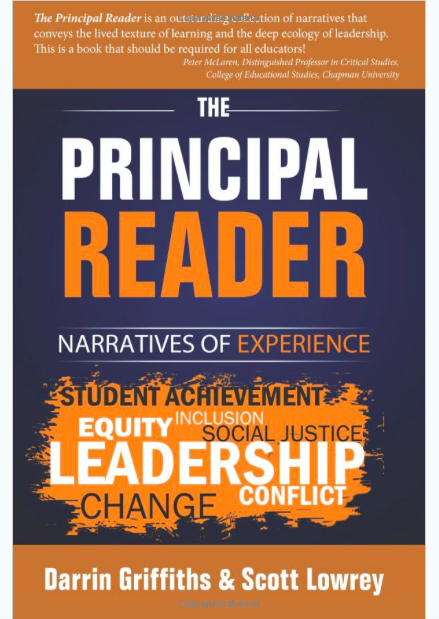From: Griffiths, D. & Lowry, S. (Eds.). The Leader Reader: Narratives of Experience – An International Collection. (Word & Deed Publishing). Available Spring 2018.
“That’s not a real word, Gillian.”
I recently participated in a seminar on “student engagement” with new and experienced teachers, principals, vice-principals, and district-level educational leaders. We started with a basic ice-breaker activity. We were asked to introduce ourselves to people by giving our name and indicating what one word reflected a central aspect of our educational philosophy.
My chosen word led to a lot of blank stares and more than a few confused looks.
“Hi, I’m Gillian Judson. My word is perfinker.”
Most people I met nodded hesitantly, taking on a facial expression that said …rrrriiight. And that means? One person I met looked at me skeptically and said,
“That’s not a real word, Gillian.”
And so, I explained to my skeptical colleague that I’m a perfinker. And, the thing is…he is, too.
A few weeks later I had a chance to have a deeper conversation with that skeptical, stickler-for-English colleague. I’m glad I ordered the large coffee because what started out as fairly superficial discussion about the notion of “perfinking” and what it means for teaching, turned into a much deeper examination of how imagination supports effective leadership, too.
Oh, but it is a word.
If you’ve seen my TEDx talk or if you have been following imaginED you know what I mean by “perfinker”. Basically, I agree with psychologist David Kresch’s observation that human beings never just think. They perceive, feel, and think at the same time. They perfink. Recent research in affective neuroscience also indicates this to be true. (And, of course, many people simply know this to be true.) Emotion is—as Dr. Mary Helen Immordino-Yang (2105) describes it—the mind’s rudder. Emotion at the helm. What a lovely metaphor for learning. Emotion directs what is meaningful to us. Put another way, the things that we most remember, the things we understand affect us. We are all emotional and imaginative beings. I believe we would transform teaching–and leadership–if we acknowledged that human beings are, indeed, perfinkers.
A Large Coffee, Please.
With caffeine coursing through our veins we considered the following questions:
What if educational leaders saw the people in their schools/districts/communities as perfinkers? How would this realization influence the ways in which they shaped their interactions with their teachers/staff? How would this realization impact the kinds of professional development experiences offered to teachers? How would this realization impact policy decisions made in the name of student success/achievement?
We agreed that while effective educational leaders may not know the term “perfinker”, at some deeper level they do understand the importance of emotional and imaginative engagement for their leadership practice. They know that imagination is as important for student learning as it is for teacher learning, community-building, and educational change. We decided that effective educational leaders are storytellers.
Thoughts On Story & Storytelling
Now, my colleague and I spent a long time talking about “story” and “storyteller”—I did say a large coffee. Much like the notion of “imagination” itself, “story” is often misunderstood. The ability to envision the possible—the work of the imagination—lies at the heart of all human invention and understanding. It is one of the great workhorses of learning. It is not a childish practice of make-believe or fantasy nor is it a capacity of great artists alone. All human beings envision the possible. All human beings employ “cognitive tools” to make sense of the world—cognitive tools like powerful theories, vivid mental images, metaphor, humour and, of course, the story-form (Egan & Judson, 2015).
Like imagination, we agreed that the concept of “story” is often misunderstood too. The idea that effective educational leaders are storytellers does not mean they make up fictions, endlessly drone on and on, or exist in a world of make-believe. As storytellers, what they do is shape their leadership practices in ways that reveal the emotional significance of what they are doing. They engage the perfinkers that they work with by evoking their emotions. This is storytelling. There’s a reason why the story-form is one of the most powerful teaching tools—it engages human emotion and ignites imagination.
We ended with the following questions and a plan to have another coffee:
How aware are educational leaders of the imaginative needs/interests of their teachers? How often do these tools influence how principals introduce new ideas to their teachers or how school communities welcome and engage the parent community? What role does imagination play in the “brand” of schools or districts? Is the freedom to envision the possible part of their brand?
It’s one thing to say “Yes! We value imagination and creativity in our students. We support it in our classrooms!”—it’s another thing for school leaders to enact imaginative practices themselves.
Hear From Leaders Around The World
My story is part of an international collection of narratives on leadership entitled The Leader Reader: Narratives Of Experience (Griffiths, D. & Lowry, S. (Eds.); Word & Deed Publishing). This is the second book that shares the experiences of educational leaders.
 The first collection entitled The Principal Reader: Narratives of Experience (2017, Word & Deed Publishing) spoke directly to practicing and aspiring school leaders. Written by school leaders for school leaders, it shared the lived experiences of school leaders throughout North America and how they addressed opportunities and challenges such as: leadership theories in practice; confronting the status quo; leading the instructional practice; leadership and adversity; building relationships and developing people; reconciliation through education; equity and inclusion; social justice; leading change and organizational improvement; and maintaining work-life balance heavily predicated on humor. This book has received an overwhelming response due to its superbly crafted insights from contributors.
The first collection entitled The Principal Reader: Narratives of Experience (2017, Word & Deed Publishing) spoke directly to practicing and aspiring school leaders. Written by school leaders for school leaders, it shared the lived experiences of school leaders throughout North America and how they addressed opportunities and challenges such as: leadership theories in practice; confronting the status quo; leading the instructional practice; leadership and adversity; building relationships and developing people; reconciliation through education; equity and inclusion; social justice; leading change and organizational improvement; and maintaining work-life balance heavily predicated on humor. This book has received an overwhelming response due to its superbly crafted insights from contributors.
The Leader Reader: Narratives of Experience – An International Collection seeks to extend this conversation to the lived experiences of school-based and system-based educational leaders including those serving in international settings. We are expecting to have upwards of 120 chapters from thirty+ countries around the world. Expected publication Spring 2018.
Visit Word & Deed publishing to learn more about our roster of authors and publications in The Leader Reader: Narratives Of Experience.
Additional Reading/References
Egan, K. & Judson, G. (2015). Imagination and the Engaged Learner: Cognitive Tools for the Classroom. New York: Teachers’ College Press.
Immordino-Yang, M. (2015). Emotions, Learning, and The Brain: Exploring the Educational Implications of Affective Neuroscience. New York: W.W. Norton & Company.




